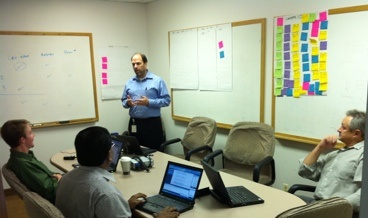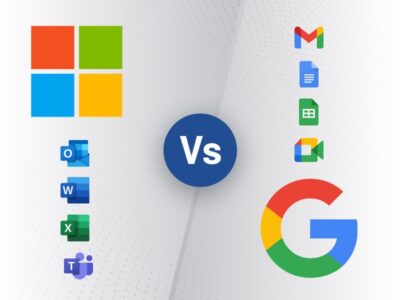The Problem of CIOs in Small-Medium Organizations
Organizations are designed with responsibilities and personnel capable to carry them out. These are then placed in a hierarchical structure we see reflected in an “org chart”. One of the boxes on this chart an organization sees a need for is a CIO or CTO, to reflect the need for somebody to be responsible for the information technology function and have the capabilities to carry it out.
But small organizations rarely start off with a CIO; instead they start off with a junior help desk person or perhaps a network administrator. The cost of starting off with a highly skilled CIO is too high and having them do helpdesk work or fixing printers is not an effective use of budget. But having the low-end skills of a help desk person doesn’t provide the organization with the ability to align the business and technology. IT personnel new in their career or more junior by default focus more on the technology and gadgets than they do on the business needs and technology that would solve their problems. They request a lot of budget, but bring little new ideas to production that will help the business. By having the junior person on staff the organization is not only faced with a lack of necessary skills, they also now must manage a skill they have little understanding about. This creates ineffective decisions and misspent funds.
You might consider at this point “Why not hire a CIO?” For organizations of less than 500 users a CIO would be a luxury. They are a fairly expensive proposition, and with the revenues of the organization they would not have  enough funds to invest to take advantage of their skill set. They would have great ideas about implementing new sales force automation, e-commerce systems, inventory management and other exciting prospects for the business, but then face a budget that does not allow them to implement them.
enough funds to invest to take advantage of their skill set. They would have great ideas about implementing new sales force automation, e-commerce systems, inventory management and other exciting prospects for the business, but then face a budget that does not allow them to implement them.
What is the solution then? How can an organization have these essential skills and yet spend the right amount for their size?
Solution: A VCIO
A “Virtual CIO”, or as we will refer to it, a VCIO, is a fractional or part-time resource that can work with the business leaders of the organization and oversee IT operations. They may work between 16 and 40 hours per month depending on the investment level and project status. Sometimes they may be close to full time, but generally it will be much less than that. They will be present for key meetings about the business strategy or perhaps the weekly operational meeting to review business status, and will do work on their own to review options, speak with IT staff, or end users about key issues. You as an organization will pay for only what you need.

Some capabilities and services of the CIO can offer you are:
- IT Strategy: develop an overall plan for information technology based on the discussions with business leaders and understanding of the industry and market conditions.
- Understand the business: the key issue here is that the VCIO will be a part of your management team, and will listen from a technology perspective to the problems the business has. Every person on the management team comes from a different focus, a sales manager will talk about how to increase sales, or a production manager will be focused on how production works with the rest of the organization. The VCIO will listen from a technology perspective so that when they hear problems they will contemplate and suggest options that employ technology in ways that others on the team have not considered.
- Design the technology platform, policy and process, and personnel for the current and future needs of the business. These are the three key aspects of IT: the technology put in place such as which ERP system or servers to use, the process IT uses to support and manage systems and users, and the personnel and their roles within the IT department. The VCIO can align these to provide a fully effective IT function that meets the needs of the business.
- Business Process Mapping – people with an IT skill set are often very keen on the business process and flow of data through the organization. A skilled VCIO can help you map the business process and identify bottlenecks and points where efficiencies can be gained either by implementing technology or changing a business process.
- IT Roadmap aligned to the business: they can develop a roadmap of technology changes and suggested projects with business analysis included to show you how the future can look with technology options.
- Benchmarking IT capabilities against industry-standards: most markets are competitive, and technology is an enabler to increase the velocity of the business. To the extent a business uses IT well compared to others, they will have a greater velocity of revenue generation, product creation and production, and cash management. These key aspects of the business must exceed the competition or you will look up from the bottom of the market. A VCIO can help you benchmark and improve this.
Having a VCIO will provide your business with a single point of contact for IT needs that aligns to the business, a partner invested in your long-term needs, and a technology leader to sit with the CEO, CFO, and other business champions and make sure the technology is an enabler for the business.
Keystone’s VCIO Offering
Keystone offers a VCIO service for its clients that may be of great help to you. If you are looking to have a better understanding of what technology can do for your business, and invest your funds to maximize ROI, then we can provide a resource to you that will produce in the areas we’ve listed above to propel your business forward.
Contact us today to discuss how we can help you for a manageable cost and maximum results.




